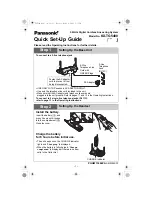
i
Caution
Usage Tips
TO PREVENT PERSONAL INJURY
AND / OR DAMAGE TO VEHICLE OR EQUIPMENT
ALWAYS use on vehicle with engine turned <OFF>.
Use this equipment in the manner specified by the manufacturer.
Understand operating procedures / Follow all safety precautions.
Connect Tester to chassis ground.
Use UltraTraceUV
®
Smoke Solution No. GLD0712UV in this Tester. Using a non-approved
solution may cause damage to vehicles being tested and may cause personal injury.
Never leave the Tester’s hoses or power cables connected to the vehicle for extended periods
of time when tests are not being performed.
Do not perform test near source of spark or ignition.
Wear eye protection that meets OSHA standards.
Follow safety precautions when using ultraviolet light source.
Always use hood support if hanging Tester from hood of car.
Air pressure (or gas pressure) supplied to Tester can be between 50-175 PSI (3.4 to 12 bar).
!
Connect to workshop airline for general purpose leak detection applications.
Smoke exiting a very small leak is sometimes even easier to see if after filling the system with smoke you reduce
the smoke flow by turning the flow control knob clockwise, which slows the exiting smoke velocity and helps you
see very small leak(s)
Use the white light provided to highlight the smoke exiting a leak.
Use the Ultraviolet (UV) light and yellow glasses provided to look for the fluorescent deposit at the exact location
of a leak. When using alternate source of UV light, be sure it is one that covers the 400 nanometer (nm) UV light
range.
When operating the Tester in near freezing temperatures, cycle the operation of the Tester 15 seconds ON and 15
seconds OFF for approximately the first minute or two of operation. This will allow the Tester to reach its
optimum operating temperature.
When testing an engine's intake or exhaust system for leaks, it is recommended that the engine be cold. Small
leaks may be sealed due to thermal expansion.




































